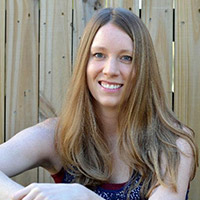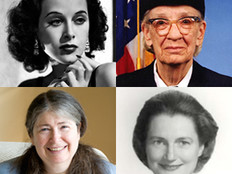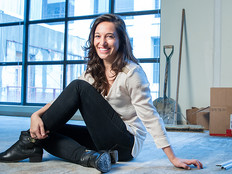The New Mothers of Technology: 6 Women Who Have Led in Tech Since 2010
In 2012, BizTech published, “Mothers of Technology: 10 Women Who Invented and Innovated in Tech,” which celebrated the women who are tech forerunners, women who deserved to be honored alongside the likes of Steve Jobs, Larry Page, Sergey Brin, Bill Gates and other tech luminaries.
They included Hedy Lamarr, who played a key role in the invention of spread-spectrum technology, which led to many modern wireless technologies; Navy Rear Admiral Grace Hopper, who helped invent some of the early English language programming languages; and Ada Lovelace, who developed an algorithm for a computer that didn’t even exist yet.
A lot has changed in the world of IT in the last five years. Networks have evolved and become more dynamic thanks to software. Mobile technology has crept into almost every facet of our lives as part of the Internet of Things. Adoption of cloud technology has skyrocketed. Artificial intelligence is now in our smartphones and helping run our cities.
And amid this flurry of innovation, women have continued to make a name for themselves in the tech industry and the broader science, technology, engineering and mathematics (STEM) fields.
According to the National Center for Women & Information Technology, in 2016, women held 57 percent of all professional occupations, yet they held only 26 percent of all computing occupations. And the numbers are even lower for minorities: Latinas and black women held only 2 percent and 3 percent of these jobs, respectively (Asian women made up 5 percent). Furthermore, according to a 2016 report from NCWIT, “even fewer women are found in software development, technology leadership, or the other kinds of key roles that have a significant influence on future innovation.”
With that mind, and as Mother’s Day approaches, we decided to revisit the idea of Mothers of Technology — this time with a fresh spin. The women we celebrate here are not merely pioneers from yesteryear, but are women working in technology today who have had an impact on how we use tech since 2010 — thanks to their inventions and work in IT.
While this list in certainly not exhaustive (and please let us know in the comments who we may have missed), we hope that you will join us in toasting these new mothers of technology!
Marian Croak
Networking Maven
 Her impact on technology:
Her impact on technology:
When Marian Croak started at AT&T in 1982 (at Bell Laboratories), there were not a lot of female engineers. However, as she told online lifestyle journal Madamenoire in 2014, Croak made her voice heard, and, in the mid-1990s, along with a few other colleagues, successfully advocated for AT&T to replace wireline telephony with Internet Protocol, the foundation of today’s modern networks.
Croak knows a thing or two about network technology. Over the course of her career, she has been granted or applied for more than 350 patents, many of which deal with the foundations of modern networks. She has received or applied for more than 100 patents on Voice over IP technology, and holds patents on everything from “assessing the installation of a component in a packet-switched network” to “dynamically adjusting broadband access bandwidth.”
At the end of her 32-year career at AT&T, Croak had been serving as senior vice president of Domain 2.0 architecture and advanced services development. In that role, she led AT&T’s efforts to adopt software-defined networking and network functions such as virtualization technology. She managed a team of more than 2,000 engineers, developers, designers and other innovation experts.
In 2013, Croak was inducted into the Women in Technology International (WITI) Hall of Fame.
Where is she now?
In the fall of 2014, Croak left AT&T to join Google, where she serves as vice president of research and development for access strategy and emerging markets. Croak is in charge of Google’s efforts to expand internet access around the world, especially in emerging markets, via initiatives such as Project Loon. Along with Google CEO Sundar Pichai, Croak has spoken about the importance of spreading internet access in countries like India, where the climate and extreme population density are testing the limits of Google’s technological prowess, IBTimes reports. However, if there’s one person who knows how to get the most out of networks, it’s Marian Croak.
Rana el Kaliouby, Rosalind Picard
Emotional Intelligence Experts

 Their impact on technology:
Their impact on technology:
Rana el Kaliouby, left, told The New Yorker in 2015: “I think that, 10 years down the line, we won’t remember what it was like when we couldn’t just frown at our device, and our device would say, ‘Oh, you didn’t like that, did you?’”
Kaliouby has good reason to think that. Along with her mentor, Rosalind Picard, a professor at the MIT Media Lab, she founded Affectiva, a company that measures emotions of users and allows computers to recognize human emotions based on facial expressions or physiological responses.
The two are experts in the field of “affective computing,” a realm of computer science Picard pioneered, which is the study and development of systems and devices that can recognize, interpret, process, and simulate human affects. Picard believes, as The New Yorker notes, that emotional reasoning is necessary for true machine intelligence. At the Media Lab, the two worked in tandem on devices that tracked emotion based on physiologic factors such as skin conductance, an indication of psychological or physiologic arousal.
Kaliouby’s software, called MindReader, “a program that could track several complex emotions in relatively unstructured settings,” in the words of The New Yorker article, attracted interest from the likes of Microsoft, Helett-Packard, Yamaha, Honda, Gibson, Hallmark, NASA, Nokia, Bank of America and Pepsi.
In 2009, Kaliouby and Picard decided to spin out their project from the Media Lab and rebuilt the company’s MindReader software, which eventually became known as Affdex, which is now available as a software development kit. The software can help advertisers determine how target audiences are feeling when they get pitched. Picard, the company’s chief scientist, was pushed out of the company in 2013, but Kaliouby is now the company’s CEO. In May 2016 it raised $14 million in a Series D round of venture capital funding led by Fenox Venture Capital.
According to the company, Affectiva’s technology is used by one-third of the Fortune Global 100 and 1,400+ brands. The company says leading market research firms like Millward Brown, LRW, Added Value and Unruly, and brands like Mars, Kellogg’s and CBS, use its technology “to measure consumer emotion responses to digital content.”
Where are they now?
Kaliouby is leading the company and wants to eventually have every device be capable of emotional intelligence. “We’re obsessed with emotional AI; we wake up thinking about it,” she said in September 2016. “I imagine a future where every device has a little emotion chip and can read your emotions, just like it’s touchscreen enabled or GPS enabled.” The technology could be used one day in cars. "Emotion-aware cars could use alerts to make distracted drivers pay attention, soothe angry drivers, or, for a highly-automated car, figure out how best to hand control back over to a human driver," CNET reports.
Picard is the director of the Affective Computing Research Group at the MIT Media Lab, and also co-founded another startup, Empatica, where she serves as the chief scientist. Empatica makes improved versions of the emotional measurement devices Picard and Kaliouby first worked on together.
Lisa Seacat DeLuca
Prolific Innovator
 Her impact on technology:
Her impact on technology:
Where does one start with Lisa Seacat DeLuca? DeLuca, a technology strategist for IBM Watson Customer Engagement, is, at 34, the most prolific female inventor in IBM history.
According to WITI, she is one of the youngest inventors at IBM ever to reach the 100th Invention Plateau Award (an IBM internal patent award system). “DeLuca’s innovation portfolio includes over 600 patent applications filed within the United States and abroad, of which 250 have been granted to date,” WITI said in its citation of her induction this year into the Women in Technology Hall of Fame. She holds 70 U.S. patents.
According to the MIT Technology Review, DeLuca’s “inventions include a way for people on conference calls to get alerts when a certain topic comes up or a certain person starts talking; a system that can guide cell-phone users as they walk and talk so they don’t lose service; a necklace that lights up every time a given Twitter hashtag is used; and a locator service in cars that can track items like, say, a wallet that falls under the seat.”
However, she also has patented technologies that are less sexy but critical to businesses. One of them is a “license handling information handling system” that lets users at companies request and accept the shifting of software licenses among each other for temporary periods of time. That can potentially save organizations millions on software licensing costs.
DeLuca has won widespread attention and acclaim in the tech world. In 2016, she was named one of the Most Influential Women in IoT by the Internet of Things Institute. Before that, DeLuca was named one of MIT's 35 Innovators Under 35 and one of Fast Company’s 100 Most Creative People in Business.
Where is she now?
De Luca is still at IBM and recently spoke at the National Academy of Inventors 2017 Annual Conference. She is also a TED speaker; a self-published author of two children’s books, A Robot Story and The Internet of Mysterious Things; and an AAAS-Lemelson Inventor Ambassador, where she increases visibility to the importance of innovation, according to WITI.
Myra Haggerty
iPhone Touchscreen Virtuoso
 Her impact on technology:
Her impact on technology:
You have likely never seen her appear on stage alongside Tim Cook, Jony Ive or other Apple executives at the unveiling of a new iPhone, but Myra Haggerty has been an essential player in the development of Apple’s smartphone and other products, including the Mac.
Haggerty, vice president of sensor software and UX prototyping, has been with Apple since 1993 and is one of their chief user experience engineers. Haggerty has been granted or applied for 30 patents, and has been granted 10, including “gesturing with a multipoint sensing device,” which is why you can pinch and zoom on an iPhone. Another patent she has been granted covers “detecting and interpreting real-world and security gestures on touch and hover sensitive devices,” allowing computers and smartphones to pick up gestures that can include, but are not limited to, “OK gestures,” “grasp everything gestures,” “stamp of approval gestures,” “circle select gestures,” “X to delete gestures,” “knock to inquire gestures,” “hitchhiker directional gestures,” and “shape gestures.”
Any time you’ve marveled at the gestures and input methods behind Apple’s wide array of devices, Haggerty and her team probably had something to do with it.
Where is she now?
Haggerty is definitely not one for the spotlight. There is little known about what she is doing at Apple, beyond continuing her work, and her LinkedIn profile is sparse.
Tamar Bercovici
Cloud Standout
 Her impact on technology:
Her impact on technology:
Tamar Bercovici, born in Israel, joined cloud storage provider Box in February 2011 as the first woman hired to its infrastructure department, known as the “Backend Engineering” team, according to Business Insider. Since then, she has risen through the ranks at Box, and is now the company’s director of engineering, where she leads the Distributed Data and Compute team, which is scaling Box’s database, cache, messaging and compute infrastructure.
In January, Bercovici, who holds a Ph.D. in computer science from the Israel’s renowned Technion Institute of Technology, was granted her first patent, which covers “scalability improvement in a system which incrementally updates clients with events that occurred in a cloud-based collaboration platform.” What does that mean in English? When a user is in a cloud-based platform (for example, Box), the system then notifies other users of those actions. Those notifications or “events” can be broken down into different types and stored in a database within a designated amount of time, and can then by read by other users.
The patent notes that the technology provides “enhancement in scalability, robustness and availability for cloud-based collaboration platforms with large numbers of collaborators by incorporating mechanisms to divide-and-conquer the workload of event updates in such platforms.”
An inventor and leader within Box’s IT structure, Bercovici is active on the speaking circuit, imparting words of wisdom at Grace Hopper Celebration of Women in Computing, Percona Live and Velocity Europe, Business Insider notes.
She has offered strong and incisive advice to women in tech on how to succeed in a male-dominated environment. “One of the main reasons I wanted to work at a startup was the idea of working somewhere dynamic where you end up doing anything and everything you’re capable of,” she wrote in a guest post for the website VentureBeat in 2013. “So if you hear about an interesting meeting, ask to join. Don’t know what the cool projects are? Just talk to people. Ask what they’re working on. Take an interest.” She also said women need to own their story and make themselves known as someone working on an interesting project. And she said that she worked twice as hard because she was new at Box and needed to earn the respect of her peers. “Bias is surmountable,” she wrote. “You own that.”
Where is she now?
Bercovici is still at Box. Earlier this year, Business Insider named her one of the 43 most powerful female engineers of 2017.









